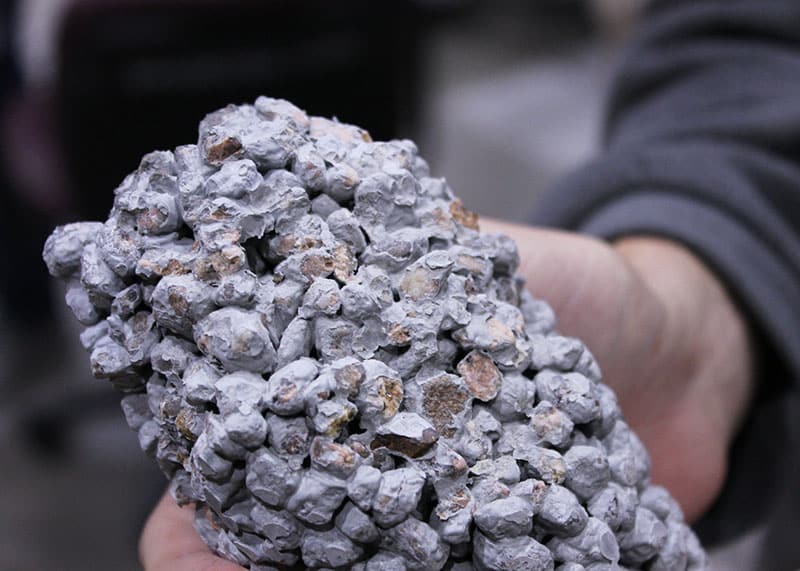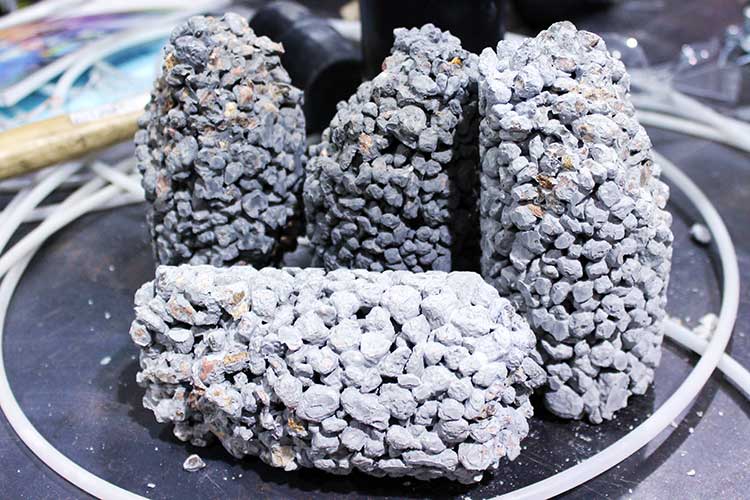Sometimes holes make things better—think swiss cheese and donuts. But can holes also combat climate change?
In a world where extreme flooding and other climate-change-related weather events are becoming more common—and inflicting serious damage on the planet—holes in concrete, an often-used construction material, may actually improve the environmental sustainability of cities globally.
Why concrete?
Much of concrete’s appeal as a building material comes from its simplicity. Concrete is simply a mixture of water, sand, gravel and powdered cement. Concrete is also cheap, easy to use and can be sculpted into nearly any shape.
However, concrete is also relatively water-resistant; a parking lot or a road paved with concrete doesn’t absorb it. In times of extreme precipitation, concrete can exacerbate the problem.
But good news: new technology is changing this.
By removing the sand from the mixture but keeping the large aggregates, experts have discovered that it’s possible to make a new type of concrete that is porous, allowing water to filter through the pavement and into the soil below.
Pollution control
The technology comes with benefits and flood risk mitigation. With traditional concrete, as storm water runoff flows across the surface, it absorbs pollutants that come from vehicles, like metals from car brakes, spilled oil or gasoline.
The pavement itself is also a significant contributor of hydrocarbons, which are common in the sealants used on the surface. All of these pollutants usually end up in a local body of water, carried there by water runoff.

This can spell disaster, especially for fragile coastal ecosystems. And with the EPA tightening regulation on stormwater runoff, many municipalities are increasingly looking to porous concrete as a possible solution.
The EPA has recently begun experimenting with porous concrete in a parking lot at its Edison Environmental Center in Edison, New Jersey. The 110-vehicle lot was completed in 2016 and features 300,000-square-feet of permeable pavement.
Michael Borst, a chemical engineer in the EPA’s National Risk Management Research Laboratory, and who specializes in green infrastructure research and finding ways to help municipalities develop cost-effective strategies to meet environmental goals, oversaw the project.
Borst said he and the agency were initially skeptical of the purported benefits of porous concrete. But after the Edison Center parking lot experiment and other testing, Borst said: “This stuff works.”
How it’s used
The EPA doesn’t yet have official best practices for when and how municipalities should use porous concrete.
Still, Borst offered a few guidelines.
“It’s better if you have soil that will allow infiltration,” Borst said. “You don’t want to be too close to a water table, otherwise the water piles up and doesn’t go down. You don’t want to be too close to a building. The water is going to move horizontally, too, and you don’t want to damage a building.”
Then there’s the issue of cost. Calculating the cost of building a permeable surface vs. a traditional one can be tricky. Porous concrete typically runs about 25% more than traditional, but the exact differences in price will depend on the local supplier and the nature of the project, Borst said.
Nevertheless, these upfront costs can often be made up over the course of the product’s lifecycle. For instance, if using porous concrete allows owners to skip on purchasing other stormwater management infrastructure, such as retaining ponds or a sewer tie-in, than it may be a worthwhile investment.
Borst offered an example through a story of a car dealership that chose porous concrete because it allowed it to convert land area that used to be a retaining pond into an expanded parking lot.
“If they can dedicate less of [that space] to stormwater holding ponds and park a couple extra cars out there, that’s advantageous to them,” Borst said.
The verdict
Built on the existing infrastructure and knowledge gleaned from its more traditional predecessor, porous concrete offers the potential to mitigate flood risks and free up more land area for productive uses.
Like any technology, choosing when and where to apply porous concrete will determine its ultimate value. For municipalities and private businesses trying to comply with environmental regulations, permeable pavements can provide decision-makers with another viable option.











